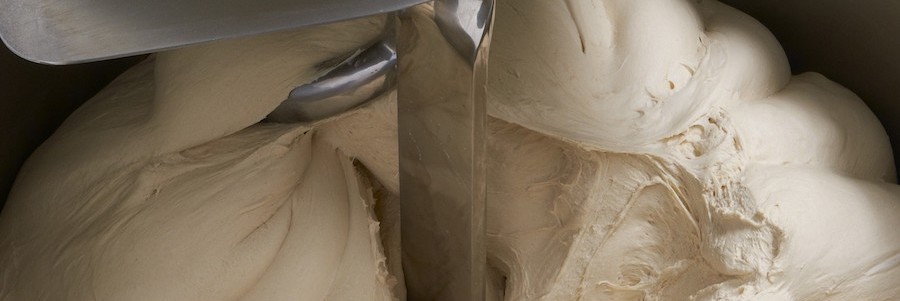
You just need to measure in the minors, throw them in with the flour, water and yeast into the mixer, step back, and out comes a perfect dough. Uhh, yeah right. As I’m sure you know from experience, a lot of thought and precision needs to go into dough mixing. The concept is simple enough:
Flour + Water + Air + Energy → Dough
Yet controlling and adjusting those factors to get a very specific outcome can be difficult. To know how to adjust, you need to know what’s taking place. The goals of mixers are to:
- Incorporate air
- Hydrate dry ingredients
- Homogenize the dough by evenly distributing all the ingredients
- Knead the dough, encouraging the interchange of disulfide bonds and the formation of hydrogen, hydrophobic bonds, salt linkages and Van Der Waals forces
- Develop the gluten by aligning the network and transforming the dough into a cohesive mass
Here are three common ways to mix dough:
- Sponge and Dough Systems: The sponge is mixed and then fermented. The final mix is to develop the dough.
- Straight Dough and No Time Systems: Dough mixing happens only once.
- Continuous Mixing Dough Systems: Requires a blending step. After a set time in a fermentation and holding tank, a continual mixing and developing step occurs.
Stages of dough mixing
- Pick up: dough is sticky, cold and lumpy.
- Initial development: dough gets warmer, smoother and drier.
- Clean up: dough is at maximum stiffness and comes together as one cohesive mass.
- Final development: Dough is at the correct temperature and handling quality (gluten film is visible, and the dough is ready to be discharged from mixer).
- Letdown: The gluten matrix begins to degrade. The dough is too warm and sticky, lacks elasticity and has too much flow.
- Breakdown: dough is beginning to liquefy. At this stage, the dough is not salvageable and cannot be used to make bread.

